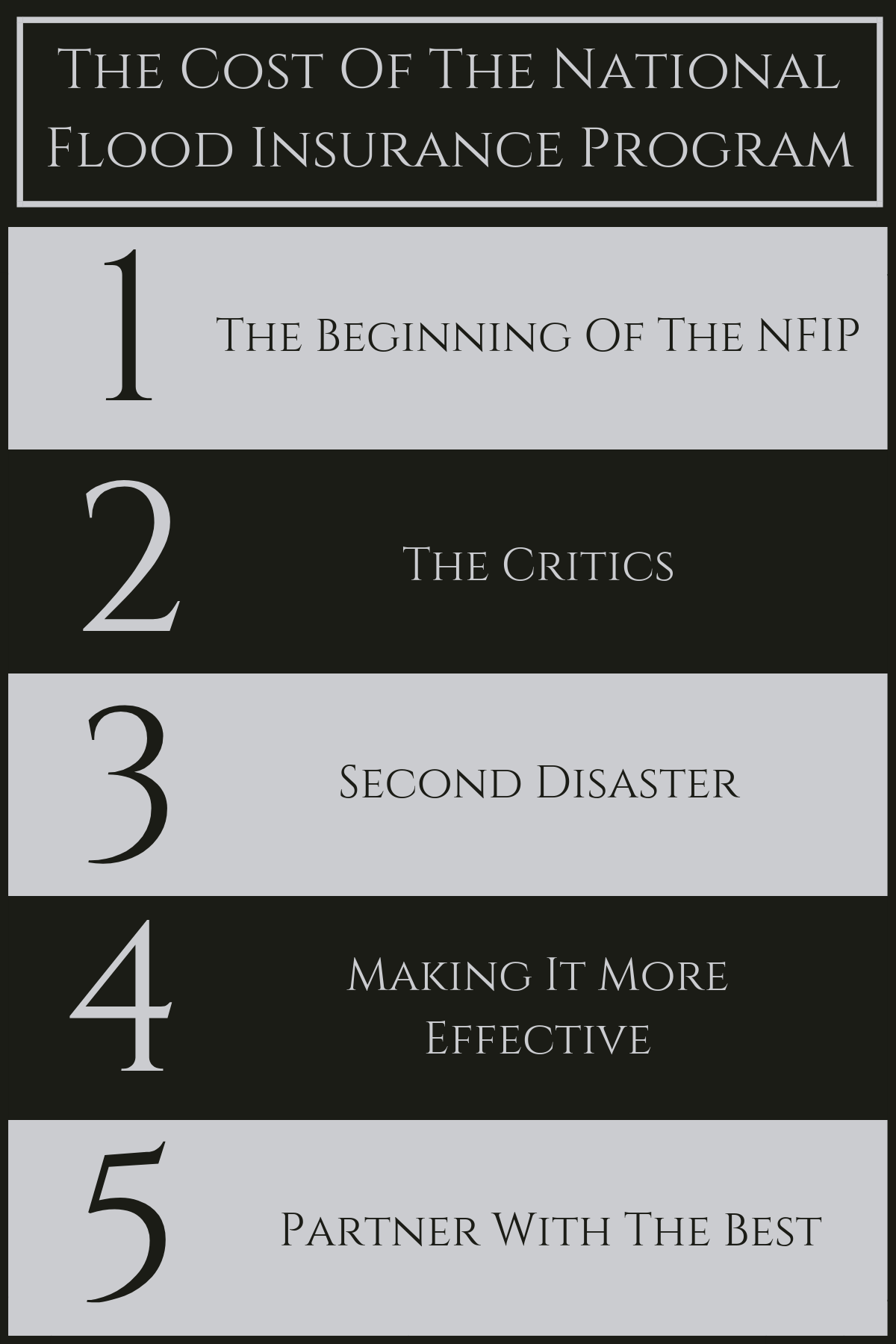01 Nov The Cost Of The National Flood Insurance Program

855-368-5502
The Cost Of The National Flood Insurance Program
By: Adam Matheny
According to the Nation Weather Service, approximately 75 percent of all declared disasters are related to floods. The risk of flooding continues to rise as more development occurs in flood zones and as a result of the changing climate. The NFIP was given an extension in July, but unless Congress addresses the many problems with the current program, the risks may soon be more than the program can handle.
The Beginning Of The NFIP
The National Flood Insurance Program was created over 50 years ago following the massive costs associated with natural disasters such as Hurricane Betsy (1965). The program was developed by the government because private insurers had been refusing to issue flood coverage since the Great Mississippi Flood in 1927.
Over the course of time laws like the Flood Control Act of 1938 were passed but by 1968 Congress realized they were not working to help reduce the risks associated with floods. Providing flood insurance was seen as an alternative. Congress finally came to understand that homeowners were going to need financial help if they were to successfully recover from flood damage.
For the first forty years, the program remained relatively solvent. From 1968 to 2005, the NFIP did end up going into debt from time to time, to cover this FEMA borrowed money from the Treasury and returned it as quickly as possible. However, since Hurricane Katrina in 2005, the debt to the US Treasury has risen to $24.6 billion with no sign of a working repayment plan.

The Critics
Critics have used this situation to show that the NFIP is a failure, yet if you look at it from another perspective, the mere fact the program is in debt could be seen as evidence that it works. While financial solvency is of obvious interest to the taxpaying public, there are other problems to consider such as the lack of private flood insurance coverage.
For example, by offering incentives the NFIP has succeeded in convincing homeowners, and communities to invest in flood mitigation programs to help reduce risks and the cost of insurance premiums.
Critics also say by having these incentives in place; the NFIP is actually encouraging development in flood zones. Yet research has shown that other factors such as beachfront property are just as much to blame for the increase in development.
Other issues such as multiple-loss properties tend to be a huge problem. States show that 1% of the homes covered the program are responsible for almost 10% of the claims filed. This results in poor use of taxpayers’ money and is a situation that must be dealt with.
Second Disaster
Receiving the much-needed help is considered to be the “second disaster” as it can take hours of hard work to put together enough money from grants, loans, government aid, family, friends, multiple jobs and just about any other source to fully recover. Those covered under the NFIP can receive a maximum of $350,000 whereas the FEMA individualized assistance payout is $34,000. These numbers can change depending on the nature of the disaster and the number of people affected.
Another issue is that the lack of participants means it takes longer for the funds to be replenished due to the lack of incoming premium payments. Approximately 5 million homes currently have flood coverage, which is only 4% in comparison to the 10% who actually live in 100 or 500-year floodplains.
Making It More Effective
To make the program more effective, FEMA needs to exert more control and provide their clients with more clarity regarding payouts and work to increase the number of people investing in the program. Instead of continuing to extend the current program, Congress needs to reform it, despite the high cost of doing so and the unpopularity of spending the money needed.
In the end, the continued development of flood zones will keep costing taxpayers more and more since we have to date refused to work on a long-term solution to climate change. Since the program’s inception it has paid out over 1.8 million claims and while it might be operating in the red, can you imagine where all of these people would be if the NFIP were not there to help.
Partner With The Best
Flow Insurance Services knows private flood, and we know it well. Place your trust in us and let us help you to write more business. When it comes to growing your business, things can be challenging. Embrace the opportunity of flood insurance!

